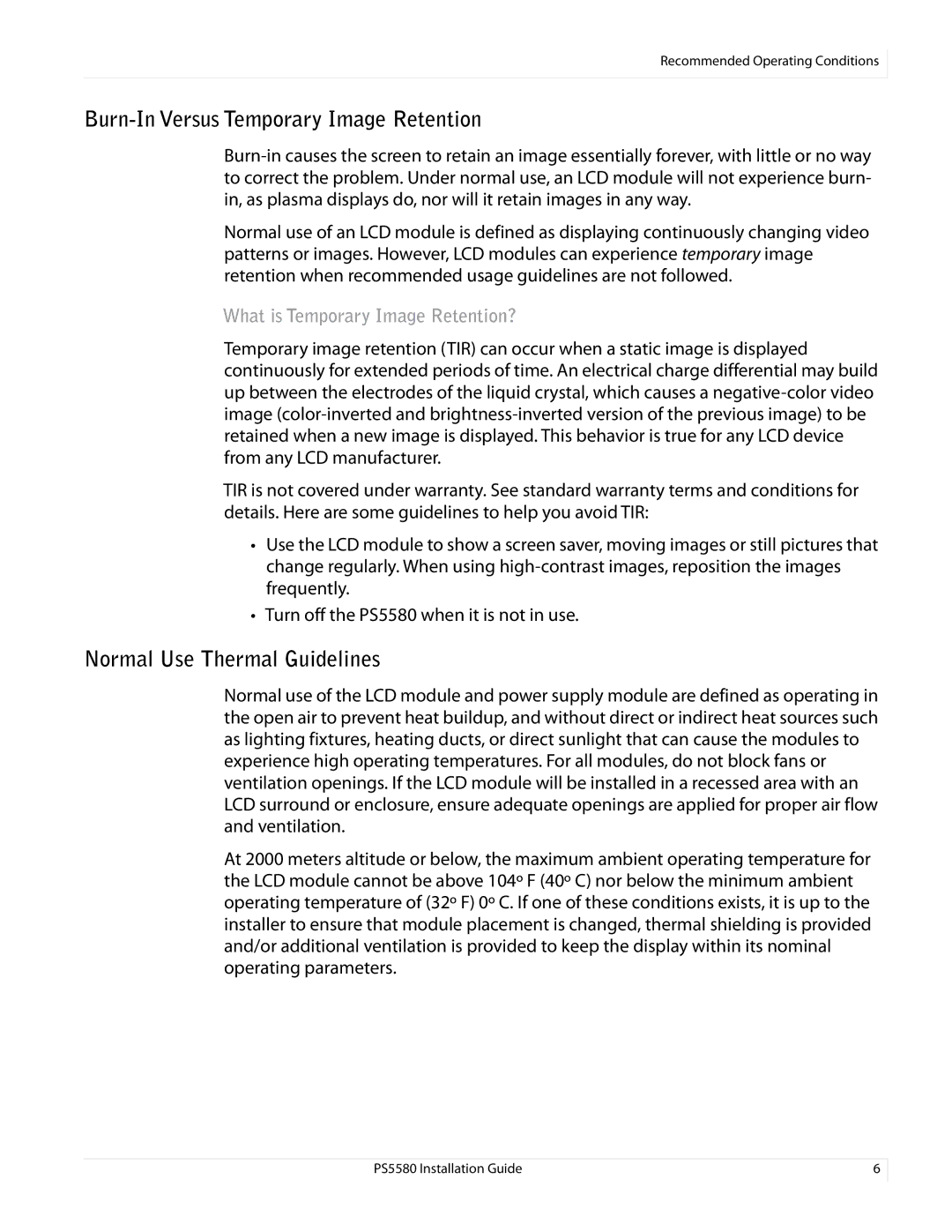
Recommended Operating Conditions
Burn-In Versus Temporary Image Retention
Normal use of an LCD module is defined as displaying continuously changing video patterns or images. However, LCD modules can experience temporary image
retention when recommended usage guidelines are not followed.
What is Temporary Image Retention?
Temporary image retention (TIR) can occur when a static image is displayed continuously for extended periods of time. An electrical charge differential may build up between the electrodes of the liquid crystal, which causes a
TIR is not covered under warranty. See standard warranty terms and conditions for details. Here are some guidelines to help you avoid TIR:
•Use the LCD module to show a screen saver, moving images or still pictures that change regularly. When using
•Turn off the PS5580 when it is not in use.
Normal Use Thermal Guidelines
Normal use of the LCD module and power supply module are defined as operating in the open air to prevent heat buildup, and without direct or indirect heat sources such as lighting fixtures, heating ducts, or direct sunlight that can cause the modules to experience high operating temperatures. For all modules, do not block fans or ventilation openings. If the LCD module will be installed in a recessed area with an LCD surround or enclosure, ensure adequate openings are applied for proper air flow and ventilation.
At 2000 meters altitude or below, the maximum ambient operating temperature for the LCD module cannot be above 104º F (40º C) nor below the minimum ambient operating temperature of (32º F) 0º C. If one of these conditions exists, it is up to the installer to ensure that module placement is changed, thermal shielding is provided and/or additional ventilation is provided to keep the display within its nominal operating parameters.
PS5580 Installation Guide | 6 |
